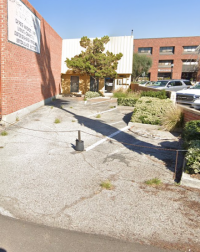Yikes
Gold Member
OK, this is probably more of a zoning/planning question:
Assuming for the moment when you restripe an existing non-accessible parking lot, that triggers requirements for accessible stall striping. Creating a van stall requires 17' of width, roughly the same as 2 conventional stalls, resulting in a net loss of one stall.
I had heard that in California, there is some state law for existing parking lots that allows you to reduce existing total parking stall counts as-needed for providing extra width for accessible parking. This can be done without re-opening old entitlement cases, etc. I cannot find this in the state law (California Government Code). Do you know if this is true?
Assuming for the moment when you restripe an existing non-accessible parking lot, that triggers requirements for accessible stall striping. Creating a van stall requires 17' of width, roughly the same as 2 conventional stalls, resulting in a net loss of one stall.
I had heard that in California, there is some state law for existing parking lots that allows you to reduce existing total parking stall counts as-needed for providing extra width for accessible parking. This can be done without re-opening old entitlement cases, etc. I cannot find this in the state law (California Government Code). Do you know if this is true?

